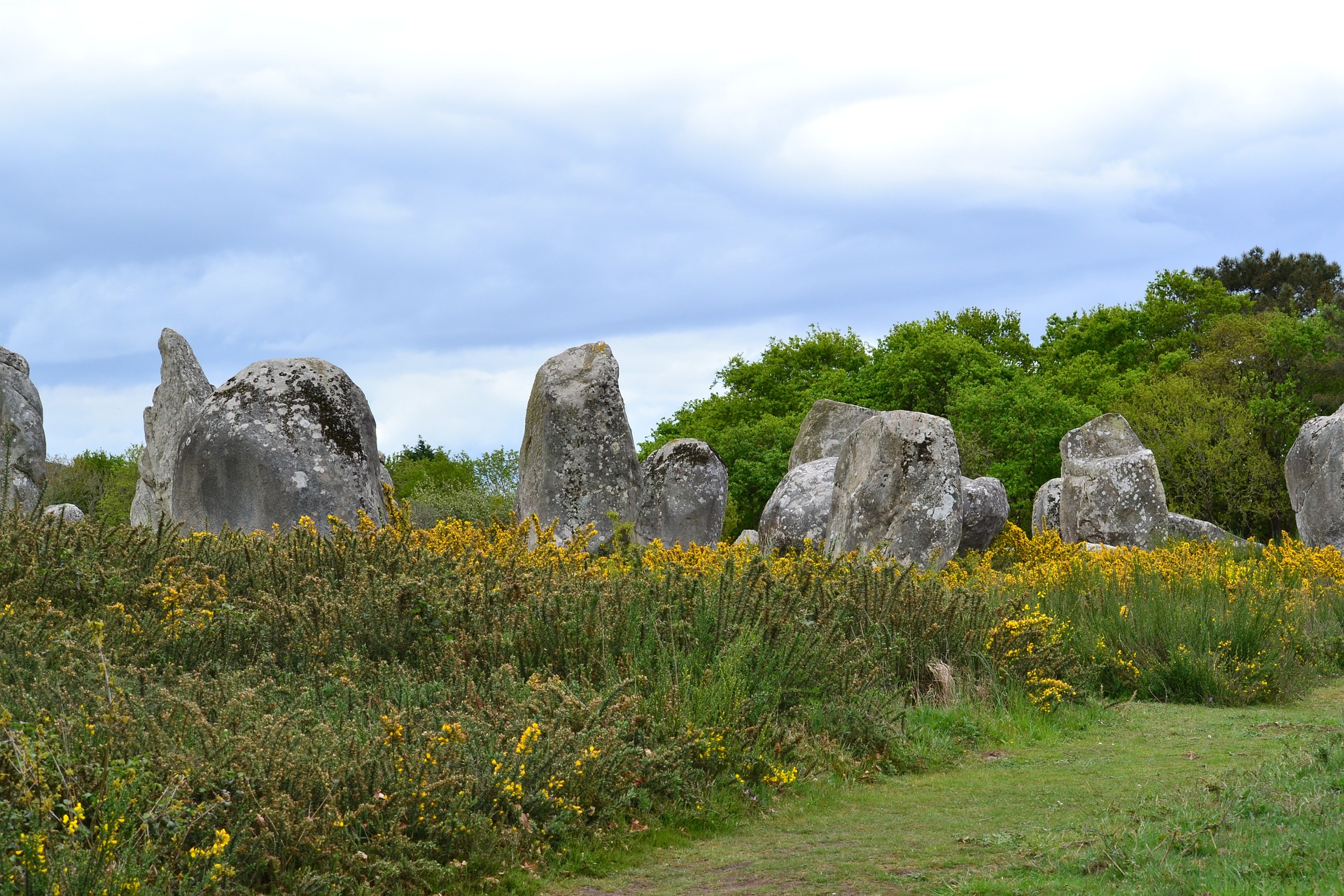The Mysterious: Carnac Stones
We’re back! Welcome to 2022, readers. I hope it’s a happy one. TML started off strong with a huge influx of readers coming from Instagram, but I can’t figure out who sent all of you! So, if you’re one of those people that clicked over from Insta on New Year’s or the day after, let me know who shared us there! Anyway, on to today’s topic…We’re starting this month off with what some have called France’s Stonehenge. In Brittany, France, thousands of prehistoric stones stand sentinel. But who put them there, and why? Let’s explore.
The Site
The site is located in the French village of Carnac, which is in the Brittany region of France. The stones were believed to have been placed and arranged in the Neolithic Period, which ranged from the end of the Stone Age to the beginning of the Bronze Age – the years of the Neolithic Period ranged from 10,000 BC to 1,900 BC. The stones have been dated to sometime between 4,500 BC to 3,300 BC.
The stone is local to the area, and used to construct three different types of formations. First, there are dolmens, which are a sort of shelter or tomb constructed of upright slabs supporting a horizontal slab on top. Second, there are tumuli, which are a sort of burial mound with a stone opening into the burial chamber, which may contain urns or caskets. The third structure is the one that most people seem to think of when they see the Carnac Stones – Menhirs. Menhirs are the stone columns that stand on their own. Because Neolithic Peoples did not have systems of written communication (that we know of, at least), the function of these structures can mostly only be theorized, based on what has been archeologically discovered alongside them.


via Pixabay)
Theories
So, basically, we can’t really know for sure what these stones were meant to signify. Many theories center around the idea that it was a burial ground or a memorial site for some sort of battle. They also have been theorized to be some sort of Neolithic astronomical calendar, though it does not appear whether any studies into their celestial alignment have been done. Perhaps the least exciting of the theories is that the stones were simply meant to mark some sort of civic meeting place.
What really sets the Carnac Stones apart, though, is that this site comes with an Arthurian legend to explain it away. According to legend, a group of Roman soldiers were working their way across France to Great Britain, hoping to overthrow King Arthur. They were stopped in modern-day Carnac by Merlin, King Arthur’s magician. In order to stop the Romans, Merlin turned them to the stones found in Carnac today.
Which is very fun and fanciful, but it doesn’t exactly explain the different formations of stones found at the site. I tend to lean towards this being some sort of ceremonial or memorial site. Perhaps there was a battle between Rome and Britain there, and the stones memorialize the fallen, and the myth has just overtaken the history. Who knows?
Sources
- https://www.thetravel.com/legendary-carnac-stones-france/amp/
- https://www.historicmysteries.com/the-carnac-stones/
- https://www.thevintagenews.com/2016/10/09/the-mystery-of-the-carnac-stones/amp/
- https://www.ancient-origins.net/ancient-places-europe/carnac-stones-enigma-solved-ancient-science-0010311
- https://www.villanovo.com/magazine/the-mysterious-carnac-stones-in-brittany
- https://www.worldhistory.org/Carnac/
- https://allthatsinteresting.com/ancient-history-mysteries/3
- https://www.roadtripsaroundtheworld.com/carnac-stones/
- https://mysteriousuniverse.org/2015/01/the-myth-and-enduring-mystery-of-the-carnac-stones/
- https://www.francetraveltips.com/france-stonehenge-carnac-alignments/
- https://thegoodlifefrance.com/magical-standing-stones-of-carnac-brittany/

Great info….cool!